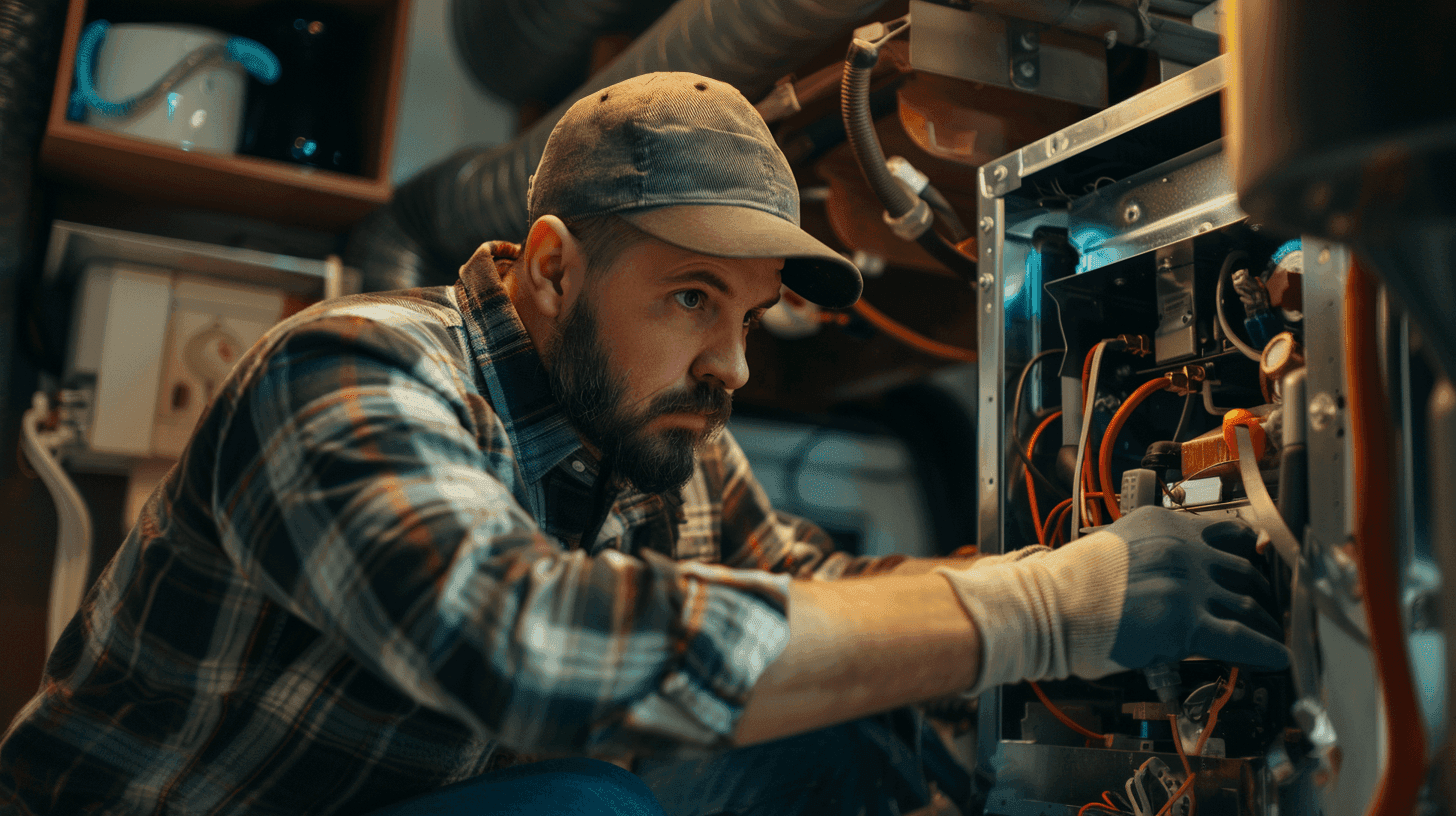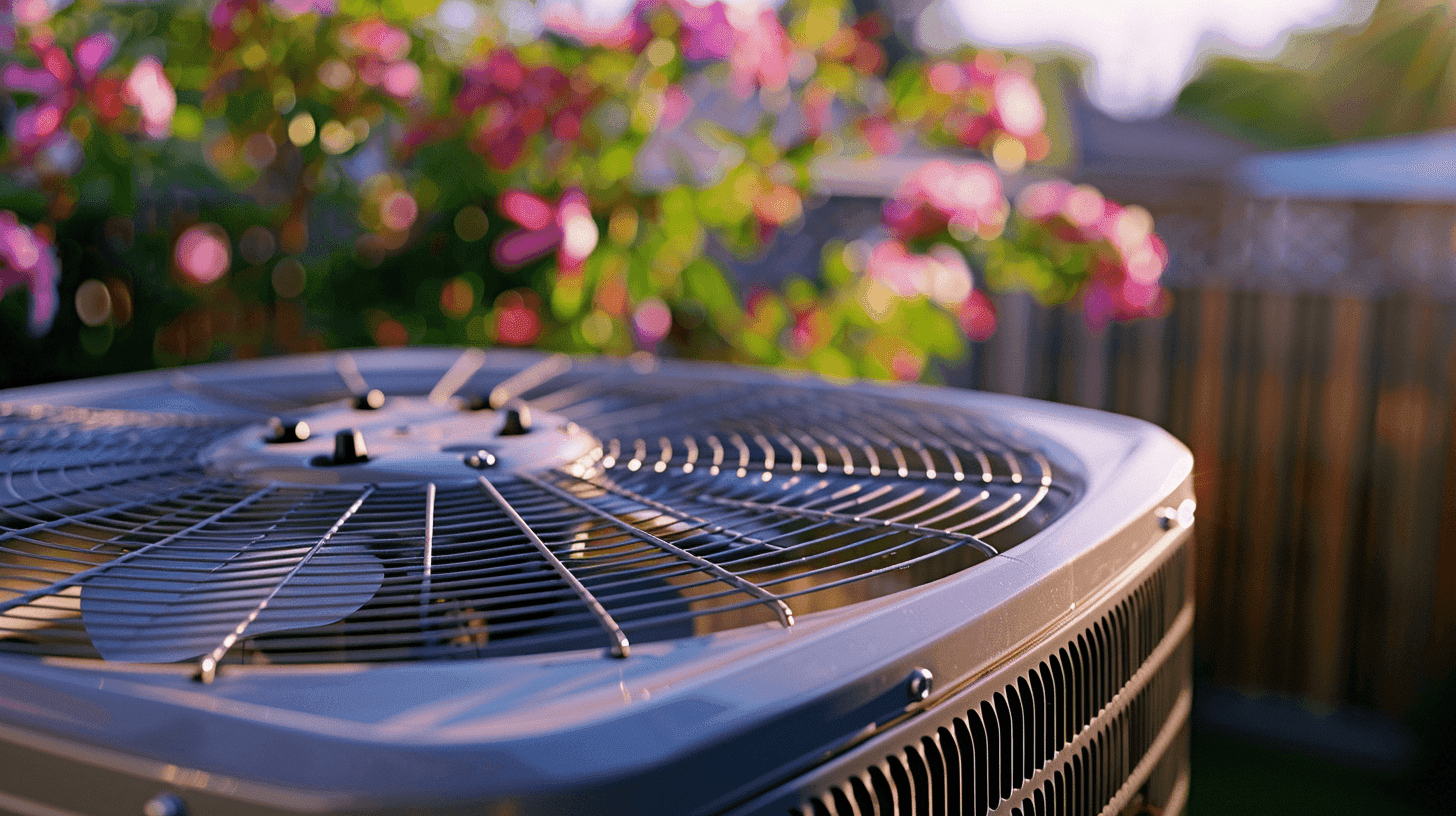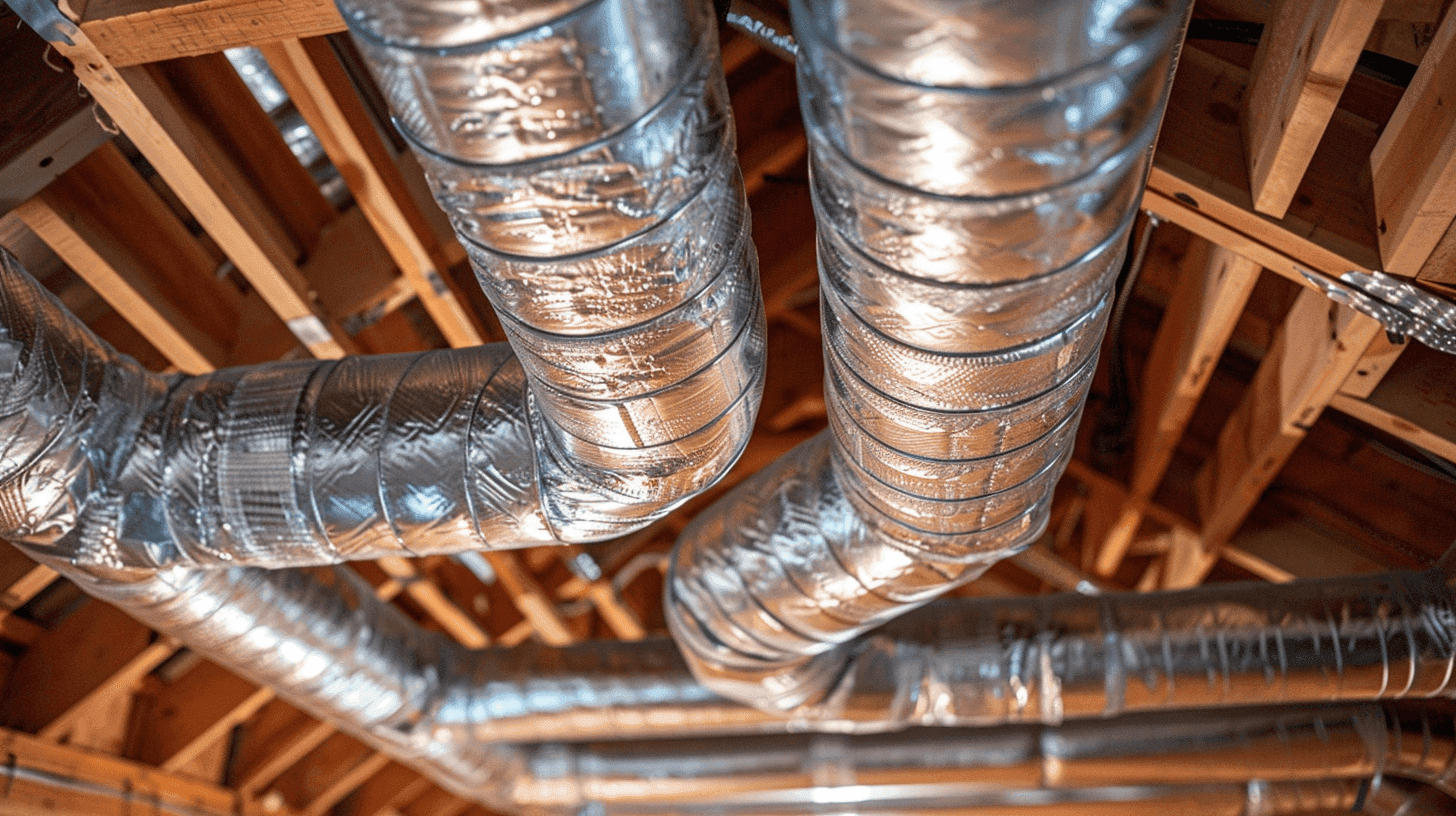
Electric vs. gas heating: which is better?
Sharing your quote takes less than a minute

As we step into the winter months, it’s time to consider your heating options. Whether your home is warmed with electric heat or a gas furnace, you want to know your family will be comfortable when the temperature drops.
Understanding your heating options, like electrification or a hybrid system, supports a comfortable home and manageable energy bill. To help you decide the best way to heat your home, we’ll explain the differences between electric and gas heat, and give a brief introduction to the hybrid dual fuel system.

ELECTRIC HEAT
What is electric heat?
Electric heat is electrical energy that gets converted to heat. You can use electric heating to warm your home, to cook, to heat your water, and so much more.
Beneficial electrification is the process of exchanging heating systems that use natural gas or propane, for systems that rely on electricity to reduce energy costs and emissions.
In order for electric heat to make sense for your home, two things must happen: you benefit and the environment benefits. For some parts of the country, electricity is the most efficient and cost-effective way to heat a home. In other areas, an alternative energy source is a better fit.
How does electric heat work?
Every electric heater has a heating element called a resistive heater element. An electric current passes through the heater element, which converts that electrical energy into heat energy.
Benefits of electric heating
- Improved indoor air quality. The Environmental Protection Agency (EPA) identifies fuel-burning appliances as one of the primary sources of poor indoor air quality.
- Better for the environment (in some areas). About 15 states rely on electric power that’s generated by hydro plants, nuclear plants, or wind turbines.
- Safer for your family. Electric heat does not use flammable oils or gasses, eliminating the risk of a gas leak or flue fumes in your home.
- Up-front cost. Installing an electric heating system in your home generally costs less up front than installing a gas-fueled unit.
Cons of electric heating
- Long-term cost. The cost of electricity is higher than natural gas in many parts of the country, which means you’ll spend more long-term to heat your home.
- Waiting for warmth. Electric heat takes a little longer to fully heat your house because the heating element must warm before you feel the results.
- No power = no heat. If you lose power during a winter storm, your heater will shut off until electricity is restored to your home.
TYPES OF ELECTRIC HEATERS
Forced heat furnace
Forced heat furnaces deliver warmth to your home through ductwork and are recommended for heating your house all at once. Large fans, called blowers, move air over a stack of resistive heat coils, called elements, to heat the air before it’s distributed throughout your home. The heating elements are activated in stages to avoid overloading your home’s electrical system.
It’s important that you buy the right size furnace for your home. A furnace that is too large will finish its heating cycle too quickly and not be able to effectively heat your entire house. A furnace that’s too small for your space will run constantly, shortening the life of the unit and causing a spike in your monthly energy bill.
Electric baseboard heaters
Electric baseboard heaters distribute warmth through convection. Warm air rises through metal fins, while cold air is drawn in through the bottom. This type of heater would need to be placed in each room of your home.
We recommend placing an electric baseboard heater under windows. The rising warm air counteracts the falling cool air from the window to maintain a more regulated temperature. The heater should fit tightly to the wall and sit at least three-quarters of an inch above the floor or carpet to allow cooler air to flow into it.
The quality of baseboard heaters varies depending on price and brand. Cheaper models can be noisy and often give poor temperature control. Look for labels from leaders in safety, Underwriter’s Laboratories (UL) and the National Electrical Manufacturers Association (NEMA), and compare warranties between models you are considering.
Electric wall heaters
Electric wall heaters use an electric element with a reflector behind it to reflect heat into the room. Once the air is warmed, a fan delivers the heat to the surrounding area.
This relatively inexpensive way to heat your home helps you save energy and lower your electricity costs. Electric wall heaters will need to be placed in each room of your house and installed on an interior wall for better insulation.
GAS HEAT
What is gas heat?
Gas heat is the warmth produced when a heating system, like a gas furnace, burns natural gas, propane, or oil fuels. It’s a reliable and largely accessible way to provide warmth and comfort to your family during the colder months.
How does gas heat work?
Natural fuels are burned to generate heat. Cool air is warmed by a gas burner and then circulated to your home through your ductwork. The fumes from the fuel-burning are exhausted through a flue pipe to the outside of the home.
Benefits of gas heating
- Low long-term cost. Gas heating is traditionally cheaper than electric heat.
- Faster full-home warmth. Hot air produced by gas heat travels through your home at 120 to 140 degrees, effectively and quickly warming the space.
- No delivery needed. Natural gas is delivered to your home through a series of underground pipes. Other fuels, like propane or oil, must be regularly delivered to power the furnace.
Cons of gas heating
- Increased health risks. Burning a combustible fuel produces pollutants that, overtime, can lead to allergies and other health issues if the flue gases leak into the airstream.
- Greater fire hazard. Gas heaters have the potential to become a fire hazard if there’s a leak or damage to the system.
- High up-front cost. You’ll pay a higher installation cost for your furnace and piping. The lifespan of your equipment will also be shorter than that of an electric unit.
TYPES OF GAS HEATERS
Forced air systems
Forced air heating systems and propane and oil-fueled systems burn natural gas to heat the air. Cool air is drawn into a heat exchanger, warmed by a gas burner, and then circulated throughout your home via ductwork.
Burning natural gas produces byproducts of water vapor and carbon dioxide. These fumes must be vented to the outdoors to keep your family safe. A flue pipe is used to ventilate these gasses from the home either through a wall vent or a roof boot.
Radiant water-based or hydronic heating systems
Hydronic or hot water systems use a gas boiler to create hot water. The water is then circulated throughout your home via pipes and tubes. This heating system can also incorporate radiators and baseboard units.
You need to use the same type of ventilation you would for a forced-air system, like a wall vent or roof boot. Make sure you have a way to properly expel any dangerous fumes from your home.
Natural gas space heaters
Natural gas space heaters are great for single rooms. You will need a heater for each room you want to keep warm, so this is not recommended to heat your entire house.
Radiant room heaters have a glowing panel that warms everything in its direct path. A convective heater warms the air in a room for a more balanced distribution of heat.
These heaters are compact and energy-efficient. They can be mounted on a wall or housed in spaces like a fireplace or stove unit. You even have the option of buying models that don’t need to be vented.
Still need help? Let’s connect you with a dealer!
Yes, please!WHICH IS CHEAPER, GAS OR ELECTRIC HEAT?
Electric furnaces are cheaper to install and set up, but gas furnaces end up being cheaper in the long run.
A new electric furnace installation costs between $1,568 – $6,574. The average homeowner pays $4,060, but that price varies depending on the location and size of your home.
A new gas furnace installation costs between $3,800 to $10,000. Each of these estimates includes equipment and labor.
Another important piece to consider is electric heating equipment lasts nearly twice as long as gas heating equipment. You can expect your electric furnace to keep you comfortable for up to 30 years, but you’re likely to only get the most from your gas furnace for 10 to 20 years.
How much does electric heat cost versus gas heat?
Electric heating costs more over time due to the amount of electricity it uses and its subsequent effect on your electric bill. However, there are ways to save money on your heating bills and even out the price between gas and electric heat.
Take a look at the average cost of an electric bill versus a gas bill in each region of the United States.
| Region of the United States | Average annual cost for electricity | Average annual cost for gas |
|---|---|---|
| Northeast | $1,300 | $1,030 |
| South | $1,430 | $920 |
| Midwest | $1,260 | $665 |
| West | $1,235 | $670 |
IS A HYBRID SYSTEM A BETTER HEATING OPTION?
A hybrid heating system combines a gas furnace with an electric heat pump, giving you the best of both worlds. This type of heating system is highly efficient and can help you save money and energy over time.
The electric heat pump can be used during milder temperatures. As winter gets colder and the temperature drops below a preset threshold, your hybrid system will automatically switch over to a gas furnace. You can also switch from the heat pump to the furnace manually.
Benefits of a hybrid system
- Hybrid systems can save an estimated 50% on yearly energy costs.
- You can qualify for a tax credit or rebate from either the federal government or your state. Ask an HVAC professional about incentives in your area.
- Your system does the work for you by automatically switching between electric and gas heating.
Cons of a hybrid system
- Hybrid systems cost more to install than an electric or gas furnace, averaging from $6,000 to $10,000 for the equipment and installation.
- This system still relies on fossil fuels when using the gas furnace, which can introduce pollutants into the home and environment.
- You will need to perform regular maintenance and upkeep on both the electrical and gas elements of the system to keep your family safe and warm.
There is much more to be said about the advantages of a hybrid dual fuel system and when it works best. A hybrid heating system may be more costly upfront if your home isn’t connected to the necessary fuel lines.
PICK WHAT WORKS BEST FOR YOUR FAMILY
The right heating decision is highly influenced by where you live and your heating needs throughout the colder seasons.If you live in an area that’s below freezing for a large portion of the year, then a gas furnace is a better way to sustain warmth.
If you live in a milder climate that stays warm for most of the year, then an electric heating system could provide the right amount of heat for your home. Remember to perform regular maintenance and system checks on whatever option you choose. This will keep your heater running smoothly and your family safe during the winter months.
Sharing your quote takes less than a minute




